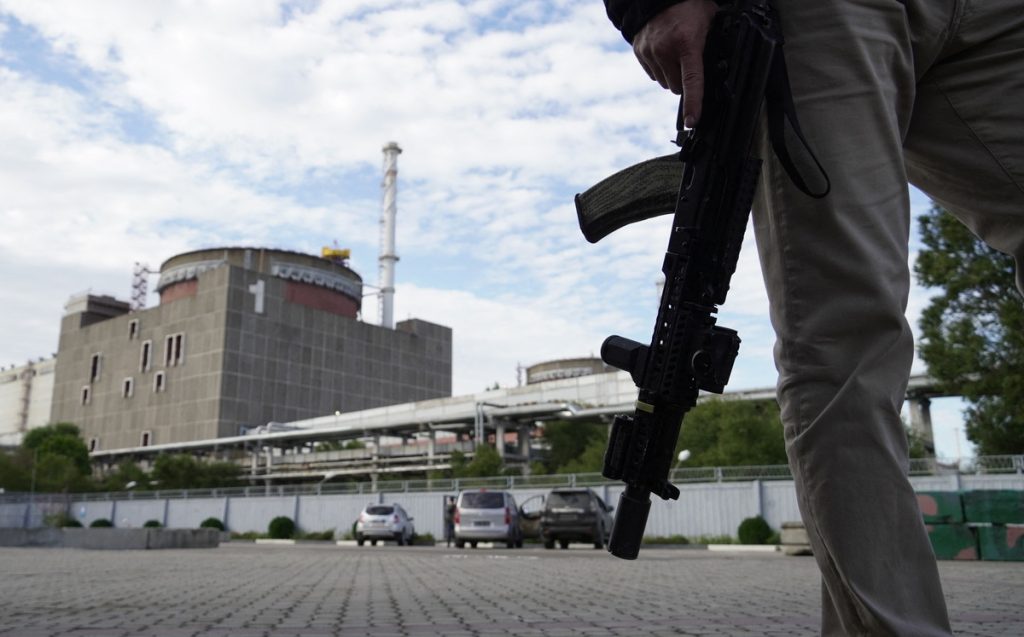Russian forces are reportedly preparing to carry out a “false flag” operation at the Zaporizhzhia nuclear power plant in Ukraine, according to the country’s military. The plant, which is Europe’s largest nuclear facility, has been targeted in recent drone strikes, raising concerns over a potential nuclear accident due to its location on the front line of the conflict. The International Atomic Energy Agency (IAEA) has expressed worry over these attacks, stating that they significantly increase the risk of a major nuclear accident.
The Ukrainian General Staff has accused Russia of planning a provocation at the power plant as part of a false flag operation, aiming to blame Ukraine for any resulting consequences. Both Russia and Ukraine have blamed each other for the drone strikes on the facility, with Russian officials alleging that Ukraine is responsible for the attacks. Despite the tensions, the IAEA has confirmed that the critical nuclear safety and security systems at the site have not been damaged, although the risk of a radiation disaster remains high.
The IAEA reported that all six reactor units at the Zaporizhzhia plant are currently in a state of “cold shutdown,” giving an additional response margin of several days in case of interruptions in heat removal. This status provides a higher level of safety compared to a “hot shutdown,” which requires more cooling water. The situation has been complicated by the destruction of the Kakhovka Dam in Ukraine’s Kherson region, making it more challenging to maintain the hot shutdown state at the facility.
Despite the ongoing conflict and security concerns, Russia reportedly plans to bring at least one of the reactors at the Zaporizhzhia plant back online, as per information from unnamed European diplomats. The facility has been under Russian control in the region, which has been the scene of significant shelling and military action throughout the conflict. The possibility of a nuclear accident remains a serious threat, and international organizations are closely monitoring the situation to prevent any catastrophic events at the site.
Ukraine’s military has emphasized its commitment to nuclear safety and responsibility, accusing Russian forces of putting the world at risk of a radiation disaster through their actions. The tensions surrounding the Zaporizhzhia plant highlight the broader challenges and risks associated with the conflict between Russia and Ukraine, particularly when it comes to critical infrastructure such as nuclear facilities. It is crucial for all parties involved to prioritize safety and security to prevent any further escalation or potential disasters in the region.
In light of the current situation, it is imperative for international bodies, such as the IAEA, to continue monitoring and assessing the safety of the Zaporizhzhia nuclear power plant. Efforts must be made to de-escalate tensions, prevent further provocations, and ensure the protection of critical infrastructure to avoid any potential risks to human health and the environment. The delicate balance between military operations and nuclear safety underscores the complexity and potential consequences of conflicts in sensitive areas such as power plants.


